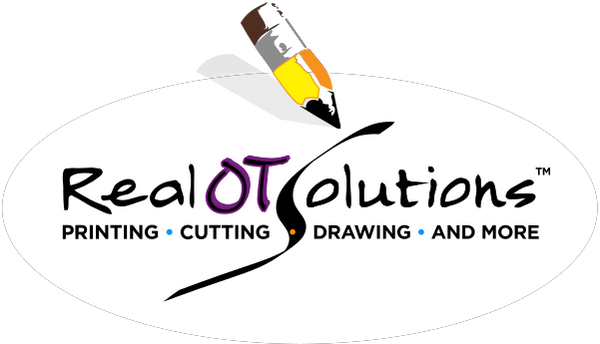For the umpteenth time, a Facebook conversation about handwriting included dismissive statements that we are not handwriting teachers. There was clearly a visceral disdain over referrals for illegible writing as not worthy of our time nor professional degree. The conversations stated that instruction is a job for instructors. Further, that our role should be developing foundation skills, rather than addressing head-on, the task itself.
This is a misguided stance.
Friends... especially those that take umbrage… let’s reexamine this task in light of the mission of OT in the school setting and AOTA’s Vision Statement for 2025.
First, we need to be clear on the purpose of school-based OT service. Unlike the medical model which focuses on remediating body functions and structures, the educational model’s focus is function, participation and access. Toward that end, we are mandated to insure each child’s ability to engage in all activities in all settings. Settings include the classroom, specials, cafeteria, playground, the bus depot, and the breadth of school grounds. We identify accommodations, train staff in the use of them, collaborate with teachers to include students as fully as possible, facilitate peer modeling, promote social interactions, incorporate evidence-based research and build skills. Within that range of responsibilities, we emerge as leaders who not only see the big picture, but coordinate, advocate and develop competency among the moving parts and involved players. In this role as leaders, we are realizing the ideals of Vision 2025.
So how does handwriting instruction fit into this vision?
For one, research has shown that impairment interventions do not translate to function. In fact, some interventions, like sensorimotor ones, have as much functional impact as no intervention. Furthermore, research confirms that to acquire automaticity and proficency in a skill, one actually has to practice the skill. In other words, to get better at printing, kids have to put pencil to paper.
Since our goal with school children is to insure satisfactory and rewarding participation in their educational programs, and with surveys reporting up to 60% of the school day spent in writing tasks, we must defer to Best Practice research. Best Practice research in handwriting identifies direct instruction as the most effective of remediations, followed by embedding instruction across the curriculum, self-monitoring, peer modeling, memorable mnemonics, parent involvement and home programs. Direct instruction includes specific skill building and verbal cues.
Along with that is acceptance of our Related Service position within schools. We are supporting the primary goals and the primary participants—teachers and students. It is NOT our job to tell teachers what to do. They already have plenty. Teachers are struggling to cover the increasing mounds of content expected at each grade level, to differentiate instruction for different learners simultaneously among a classroom of 30, and to intercede at the earliest possible opportunity with students who are not making progress at a speed commensurate with their classmates. Their plates are full.
Rather, our job is to help them be more efficient reaching and teaching their students. Recognition of our role as Related service Providers narrows the divide between collaboration versus consultation, being welcomed into the classroom or being resigned to pulling students out, and success over failure.
Helping kids acquire the basic life skill of becoming competent functional printers is a noble endeavor. Model, teach, co-teach, share and otherwise instruct both teachers and students on strategies and concepts that will make the biggest difference in the consistency and legibility of the written page. Their teachers, present and future, their parents, now and later, and the kids themselves, will forever thank you.


